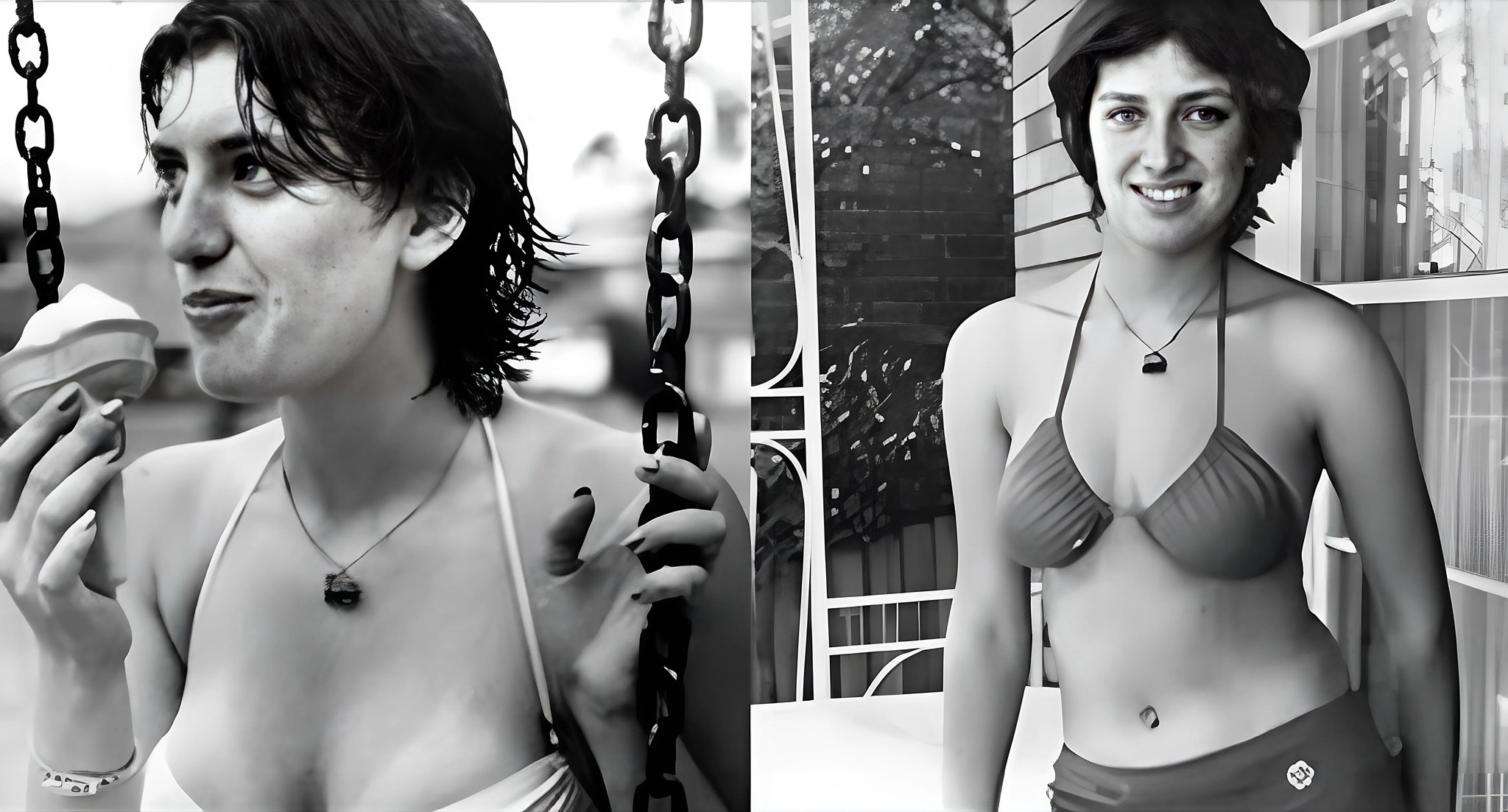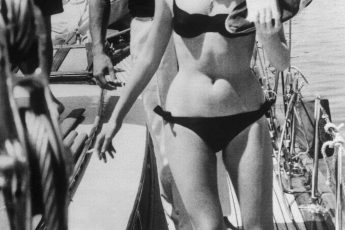38 years ago, in January 1979, 18-year-old Lilya Gasinskaya escaped from the cruise liner Leonid Sobinov in an Australian port. She swam to shore and applied for political asylum. She was wearing only a swimming costume, so journalists immediately dubbed her ‘the girl in the red bikini’ and published her photo in all newspapers. Because of this daring escape, she became a real celebrity abroad in the early 1980s, while in the USSR the incident was hushed up.
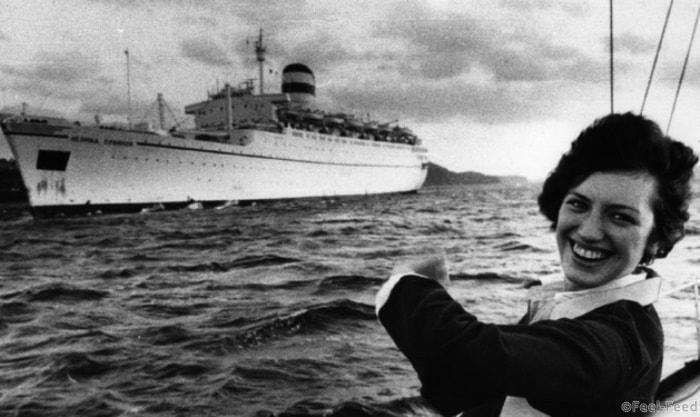
So, in January 1979, the Soviet cruise liner Leonid Sobinov, which operates winter voyages to Australia and Polynesia cruises and summer voyages to Western Europe, anchored in Pyrmont Bay near Sydney. Late in the evening, crew member Lilya Gasinskaya left all her belongings in the cabin and in one swimming costume climbed out through the porthole and swam to the shore. It took her about 40 minutes. She asked the first person she met to give her clothes and help her find the police station.
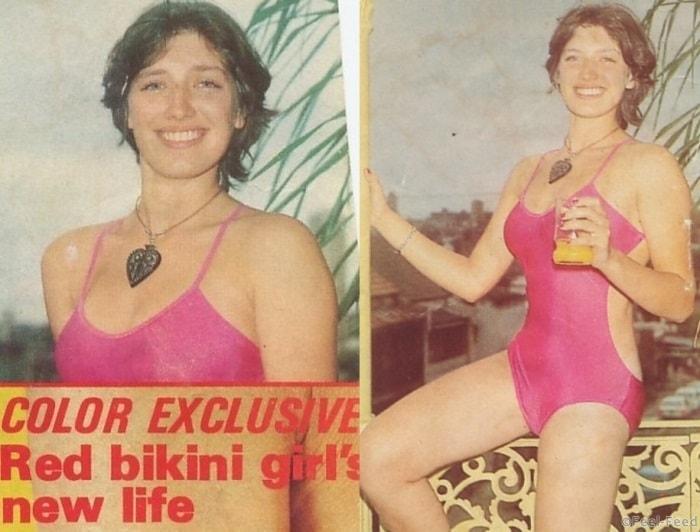
When the liner discovered her absence, a telegram was immediately sent to the Soviet embassy. They tried to find the girl, but all efforts were in vain – she was hidden by the staff of the local newspaper ‘Daily Mirror’. Their conditions Gasinskaya quite satisfied – an exclusive interview and a series of photos in a red swimming costume. In a matter of days, the escape of a Soviet girl became a major sensation in Australia. All newspapers fought for the right to publish about the ‘Red Bikini Girl’ – a girl in a red bikini. But the editors of the Daily Mirror undertook to keep the girl’s whereabouts secret until the authorities decided her fate.
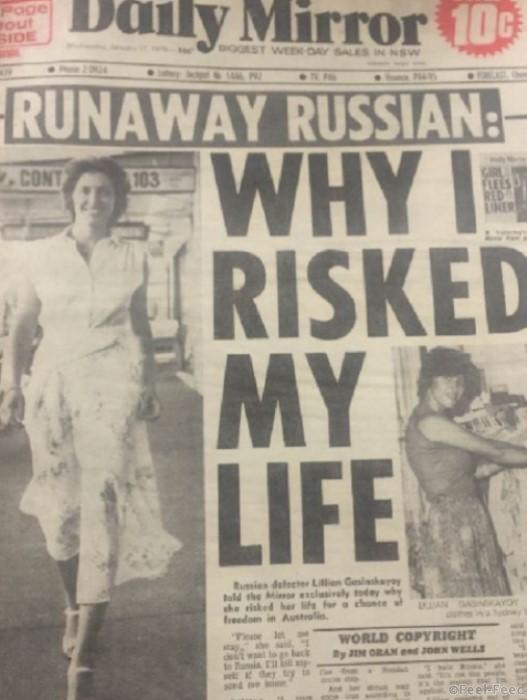
In an interview, Gasinska stated: ‘I was 14 when I began to realise what communism was and what its goal was. It became clear to me that there was only lies and propaganda around, and I began to hate it.’ The girl took a job on the liner allegedly just to escape. When asked why she decided to flee to Australia, she said: ‘I saw a picture of Australia in a magazine and realised that it was the most beautiful place on earth’.
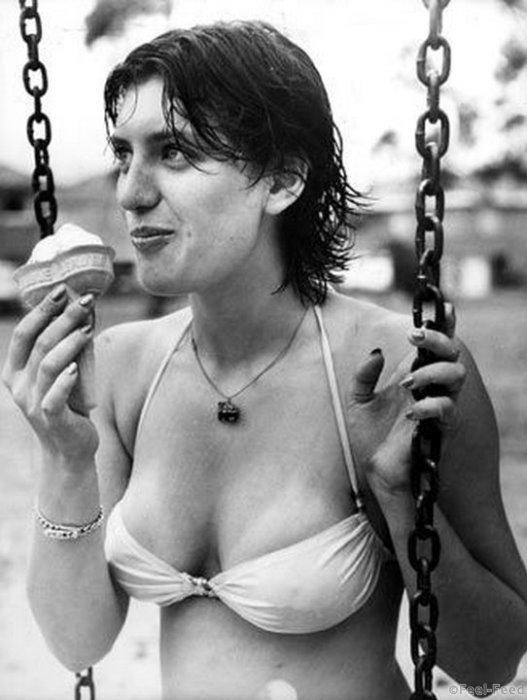
Surprisingly, she was granted political refugee status. The Opposition criticised the Minister for Immigration and Ethnic Affairs for saying that refugee status now depends only on how one looks in a bikini! After all, hundreds of illegal immigrants arriving by boat from Asia were immediately arrested. 150,000 Asian refugees applied to migrate, and even those with relatives already living in ethnic communities in Australia were refused. On the other hand, how could someone who had escaped from the USSR – the ‘evil empire’ – be deported!

Despite her loud claims that she wanted to escape the communist regime and find freedom in another country, ‘away from the lies and propaganda’, the girl bore little resemblance to a dissident. Her arguments about her need for asylum were not convincing: for example, the fugitive stated that she did not want to live in the USSR because she was bored shopping in Soviet shops. She was also unable to explain clearly what the persecution by the authorities in her home country was all about.

Lilya Gasinskaya intended to settle in Australia for a long time, so she needed to find a job. She took the easiest way: she signed a contract for $15,000 with the erotic magazine ‘Penthouse’ and starred for him naked. On the cover was her photo with a loud headline: ‘A girl in a red bikini – without a bikini’. After that she worked as a model, DJ and starred in TV series.

Soon after her scandalous escape, Gasinskaya settled her personal life as well. Her first choice was the photographer of the ‘Daily Mirror’, who for her sake left the family, and in 1984 the girl married Australian millionaire Ian Hyson. However, the marriage lasted only 6 years. In the 1990s, everyone forgot about the fugitive, her name disappeared from the pages of the secular chronicle, and the trace was lost. It is known that she left Australia and currently lives presumably in England.
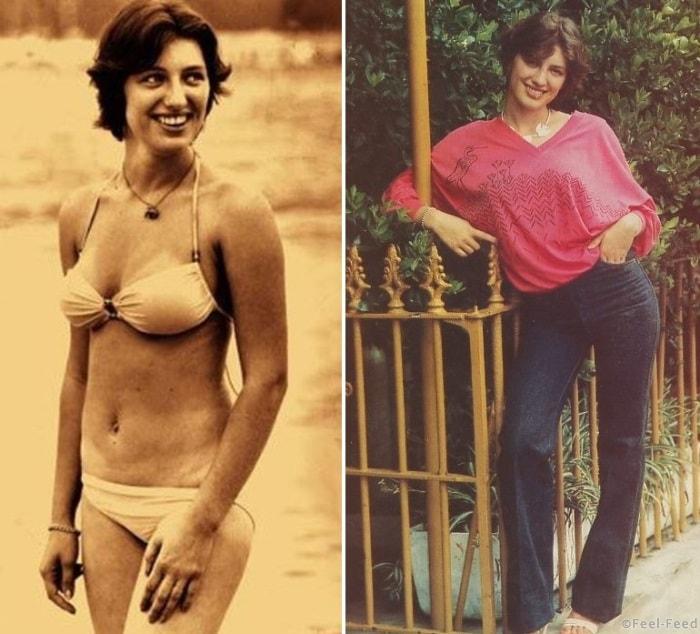
The captain of the liner Leonid Sobinov was written off after Gasinskaya’s escape – he was considered guilty of not paying proper attention to educational work among the crew members. This liner in general was called not too happy: in December 1975 a sailor committed suicide on it because of his unrequited love for one of the flight attendants. It also happened in Australian territorial waters

